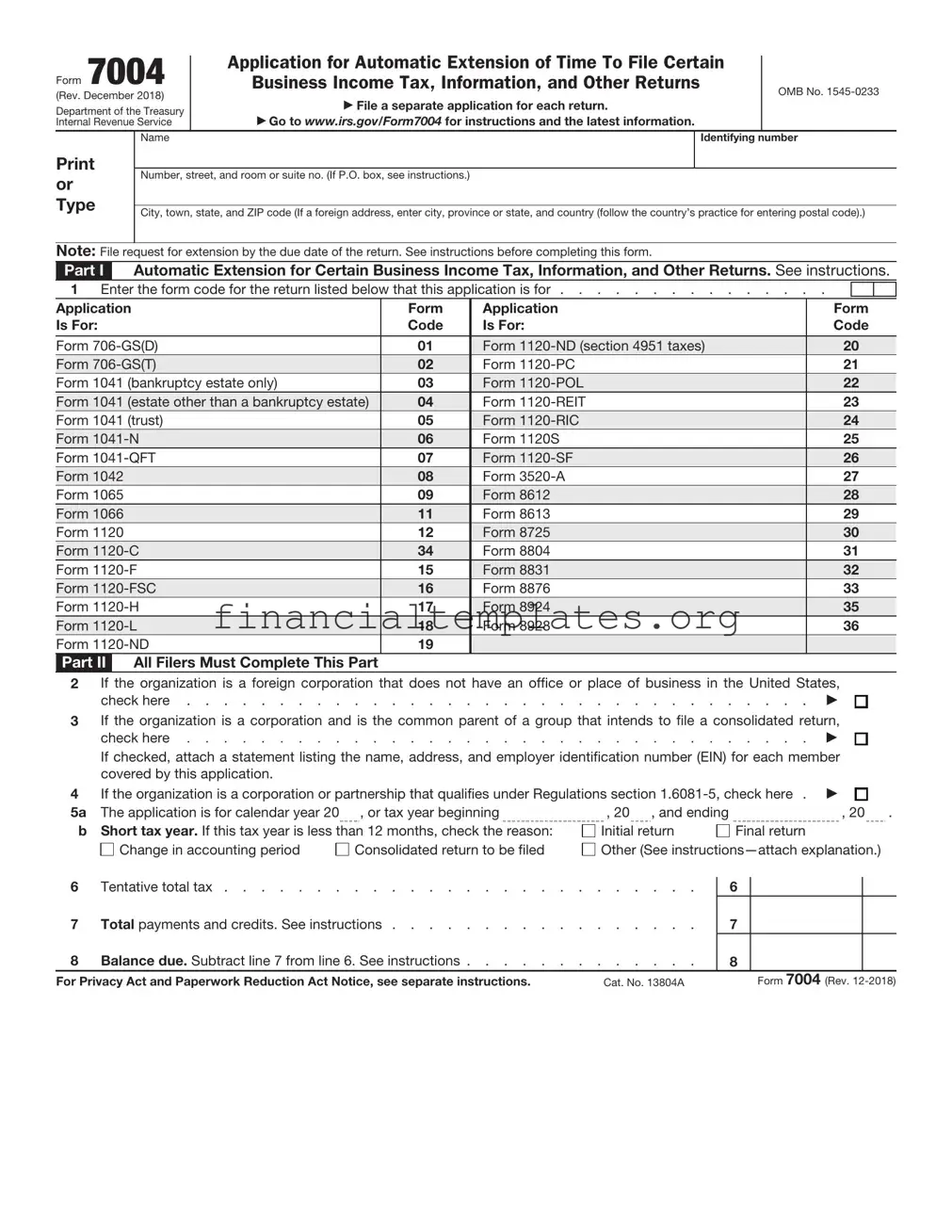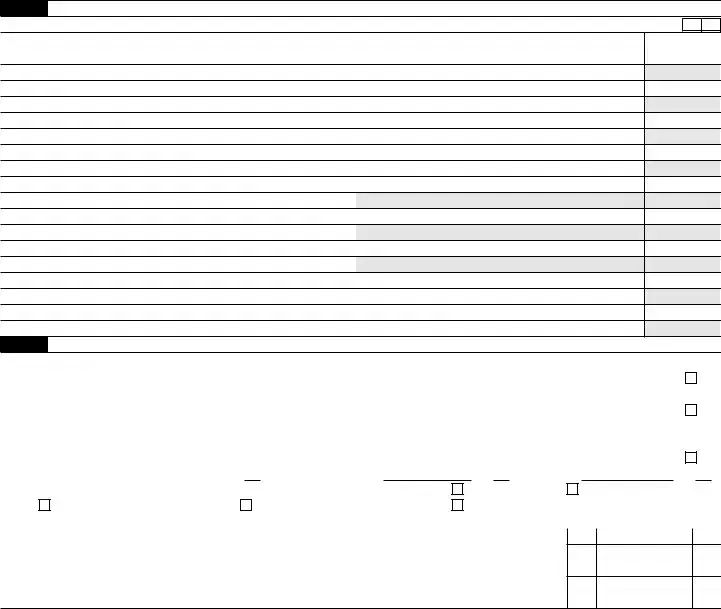The IRS Form 7004, known as the Application for Automatic Extension of Time To File Certain Business Income Tax, Information, and Other Returns, shares similarities with several other tax-related documents. These similarities often revolve around the purpose of alleviating taxpayers' burdens by offering extensions, corrections, or adjustments for various tax situations.
IRS Form 4868, the Application for Automatic Extension of Time to File U.S. Individual Income Tax Return, closely resembles Form 7004 in its foundational purpose. While Form 7004 is targeted at businesses needing more time to file their income tax and other returns, Form 4868 performs a similar function for individuals. Both forms do not extend the time to pay any taxes owed but simply provide additional time to file the required documentation.
IRS Form 8809, the Application for Extension of Time to File Information Returns, is another document similar to Form 7004. This form is used by payers or issuers who need additional time to file information returns, such as Forms 1099, 1098, W-2G, and others. Like Form 7004, Form 8809 helps filers avoid penalties by allowing them more time to gather and report accurate information.
Form 1138, Extension of Time for Payment of Taxes by a Corporation Expecting a Net Operating Loss Carryback, similarly grants corporations a deferral but specifically for the payment of taxes, rather than filing. Corporations anticipating a loss in the current year that can be carried back to offset profits in previous years use this form. This extension parallels Form 7004’s intention to provide relief under specific circumstances, focusing on payments rather than filings.
IRS Form 5558, Application for Extension of Time to File Certain Employee Plan Returns, offers an extension for filing certain employee plan returns, particularly Form 5500 series. Here, the similarity to Form 7004 lies in the provision of additional time for filers to ensure the completeness and accuracy of their submissions. Both forms are designed to help filers avoid penalties due to late submissions.
IRS Form 8868, Application for Automatic Extension of Time to File an Exempt Organization Return, is directly related to Form 7004 in providing tax-related filing extensions. However, Form 8868 is specifically for tax-exempt organizations needing more time to file their returns. Both forms recognize and address the need for additional time to compile necessary information and documentation accurately.
Form 2350, Application for Extension of Time to File U.S. Income Tax Return, is tailored for U.S. citizens and residents abroad who expect to qualify for special tax treatment. While it provides an extension to file an individual income tax return, much like Form 7004 does for businesses, it acknowledges the additional complexities faced by those living outside the U.S.
Lastly, IRS Form 7004 is paralleled by Form 1127, Application for Extension of Time for Payment of Tax Due to Undue Hardship. Although Form 1127 pertains to requesting more time to pay taxes rather than file returns, its foundation is the alleviation of financial burden and hardship. This form, like Form 7004, demonstrates the IRS’s recognition of situations where taxpayers, due to exceptional circumstances, require additional time to meet their tax obligations.

